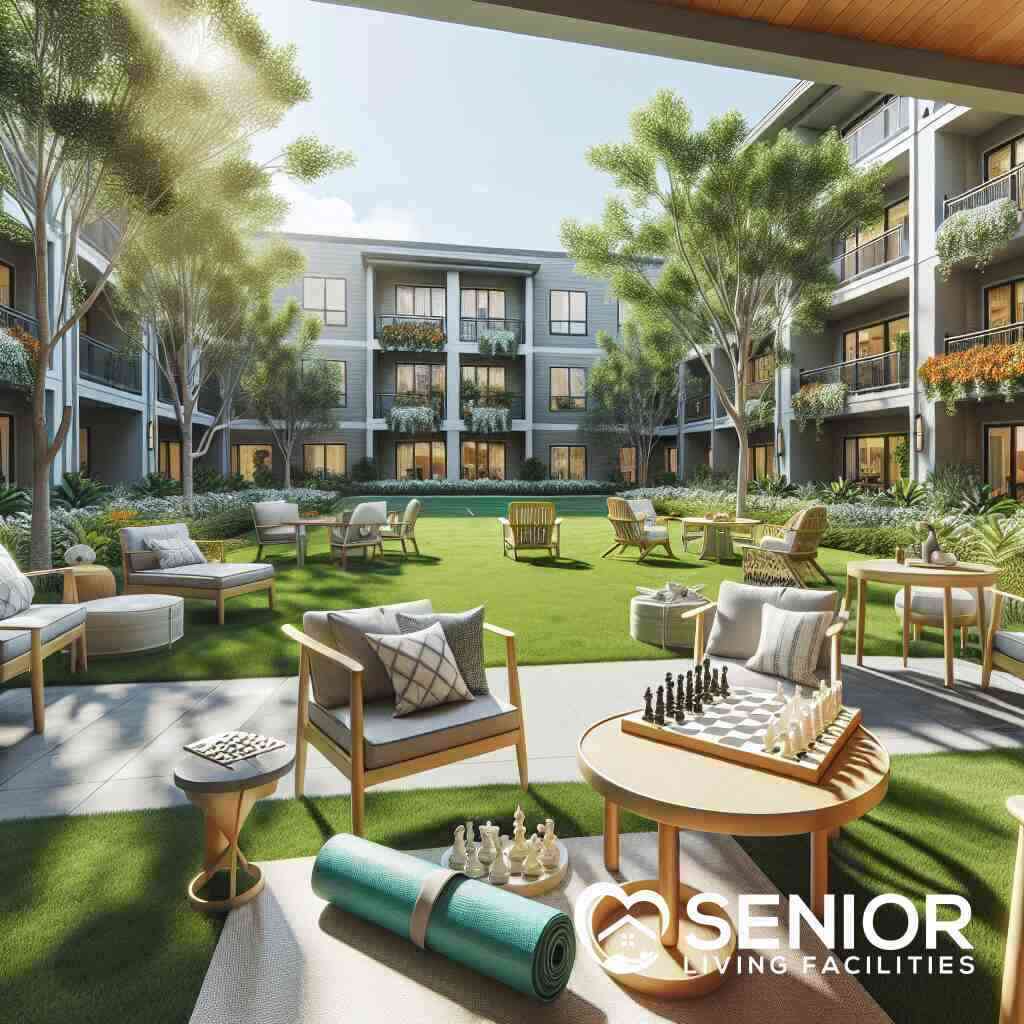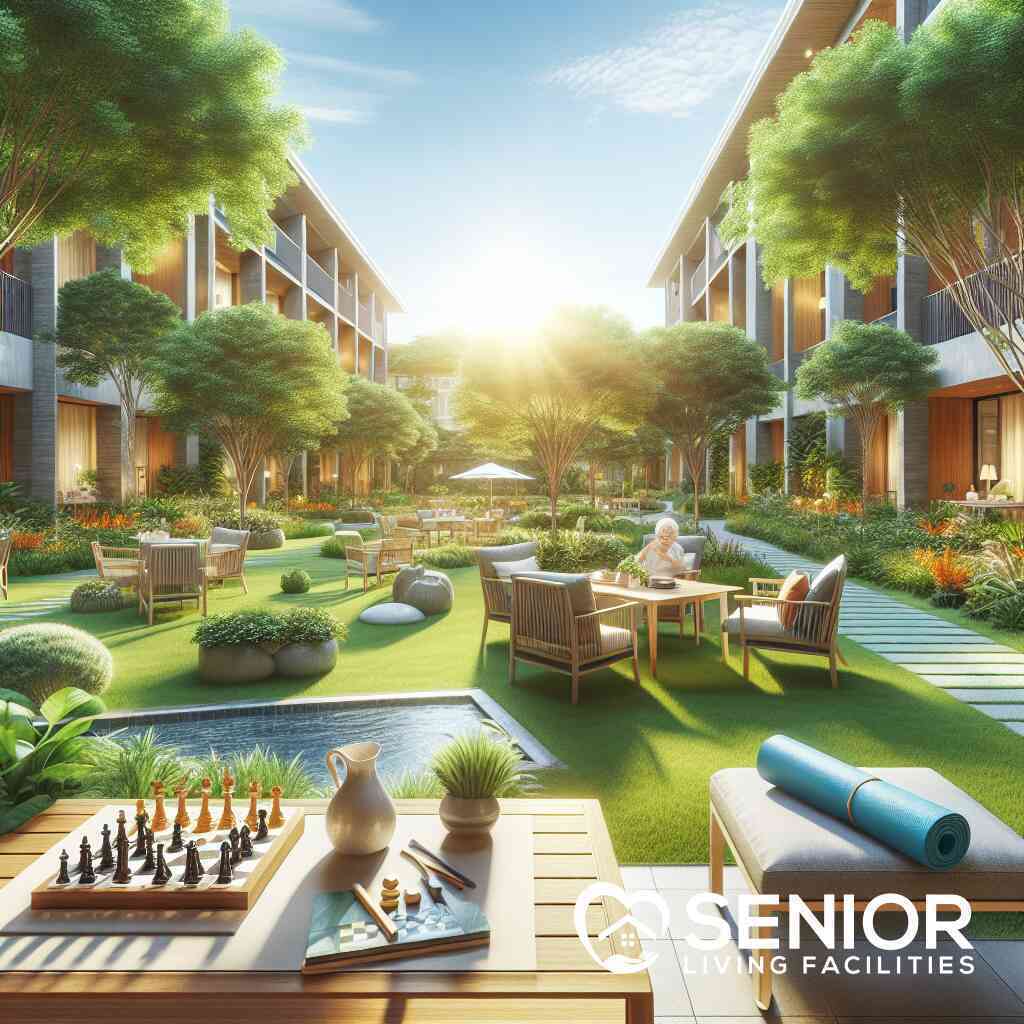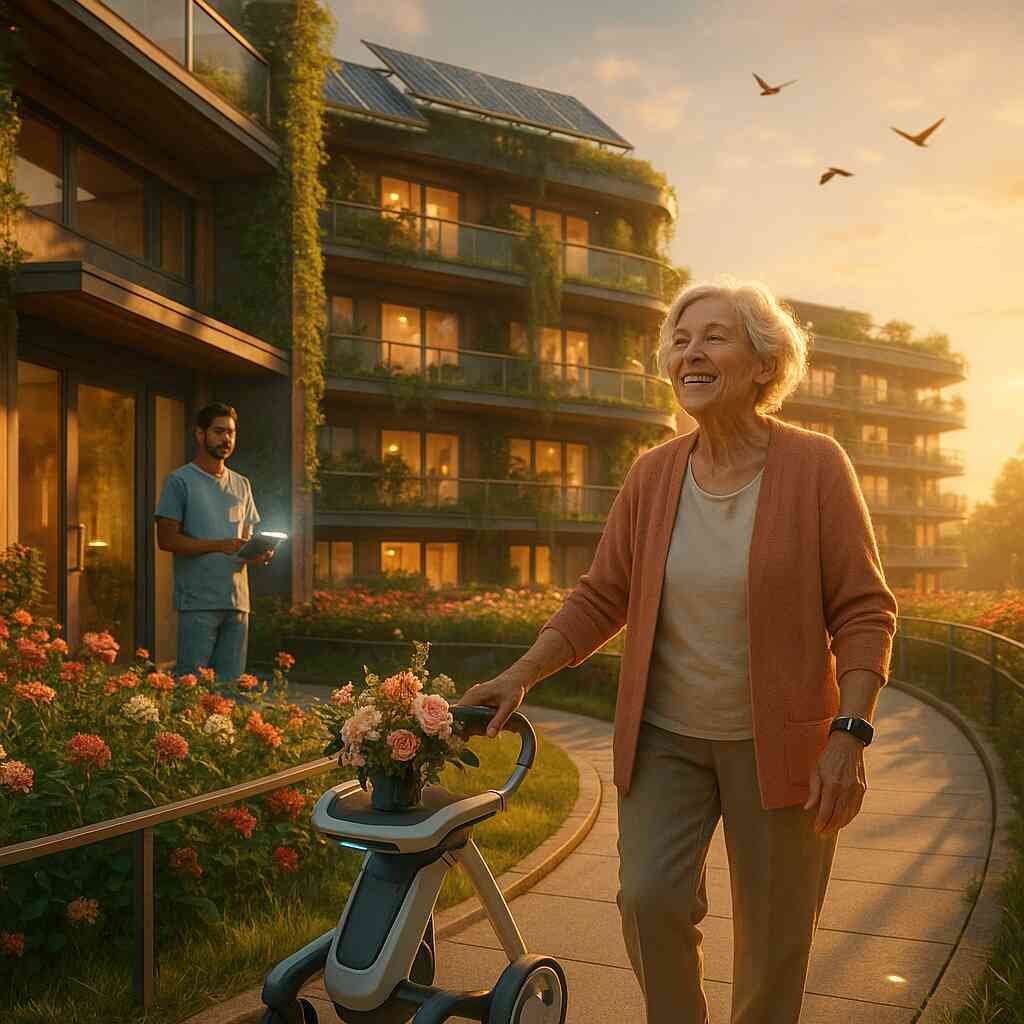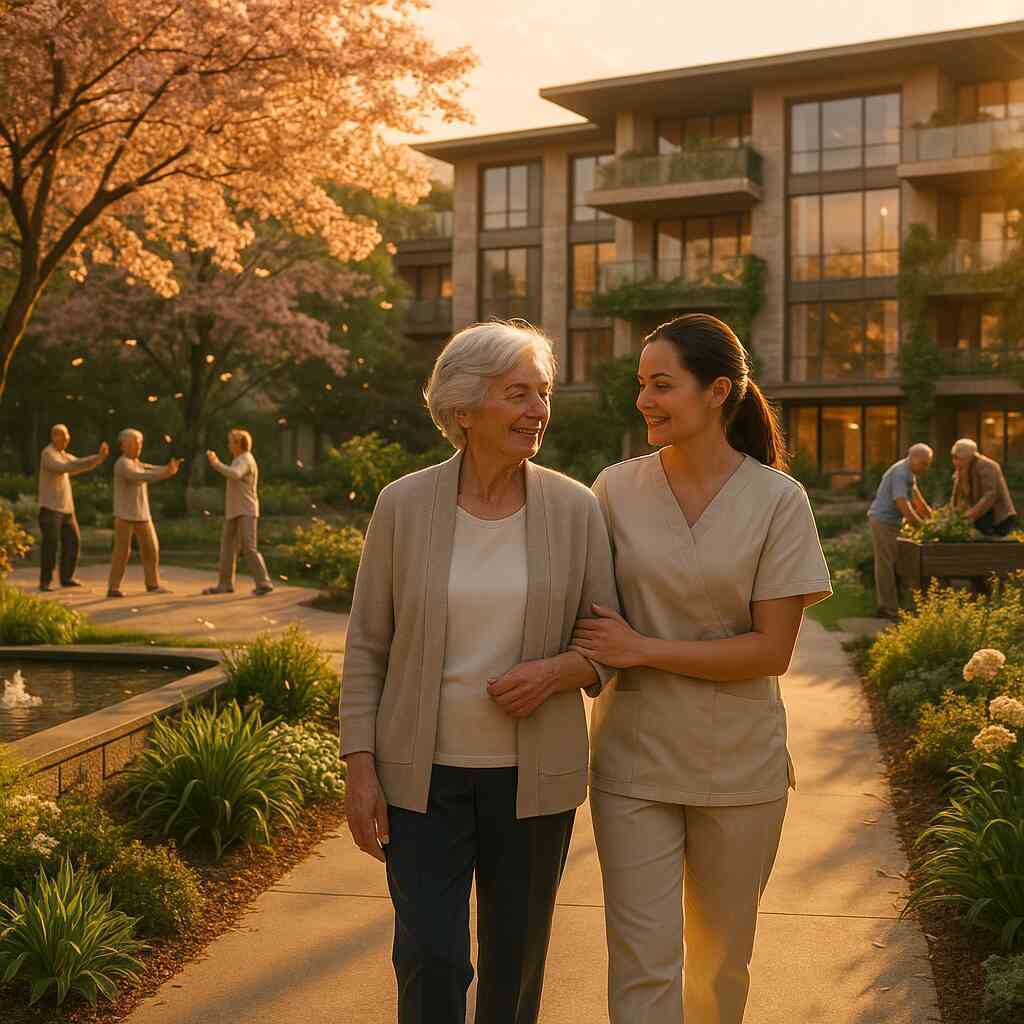
The Evolution of HealthCare in Senior Living
September 23, 2024
Introduction to Senior Health Care Evolution
Understanding the Past to Appreciate the Present
The journey of senior health care has been marked by significant milestones, shaping the care that older adults receive today. Historically, care for the elderly was primarily managed by families within homes. However, as medical science progressed and societal structures evolved, specialized facilities and services began to emerge, catering to the unique needs of seniors. This evolution has enabled a better understanding of senior health, leading to more tailored and humane approaches in senior living facilities across all 50 states. By acknowledging the strides made in the past, we can appreciate current advancements and anticipate future innovations, ensuring that senior living continues to adapt and thrive.
Why Focus on Senior Health Care?
Focusing on senior health care is crucial not only because of the growing demographic of older adults but also due to the specialized medical and emotional needs that accompany aging. Older adults often face complex health issues, requiring a spectrum of services, from preventive wellness programs to chronic disease management and palliative care. Effective senior health care impacts not just the well-being of the elderly but also the quality of life they lead in their later years. Facilities specializing in senior care, such as Senior Living Facilities, play a pivotal role in integrating these services seamlessly into everyday life, enhancing the lives of seniors and their families.
Overview of the Article
This article aims to provide a comprehensive look at the evolution of health care within senior living environments. From the origins of organized senior care to modern advancements like telehealth and AI, we will explore how each phase has contributed to the current landscape. Dive into detailed subsections on milestones, current trends, prospects, and the overarching necessity for ongoing adaptation in senior healthcare. Recession and improved services tailored to cognitive impairments are integral to today’s senior healthcare offerings.
Milestones in Senior Health Care
The Beginnings of Organized Senior Care
The historical trajectory of senior health care is a testament to society’s growing attention to the aging population. Initially, the responsibility of caring for the elderly rested solely within family units. Over time, this evolved into organized community-based care during the late 19th and early 20th centuries. The establishment of the first nursing homes and senior living communities marked a critical shift, aiming to provide specialized care environments. These early facilities laid the groundwork for the broad spectrum of senior health care services available today, from senior living near you to comprehensive medical care tailored for the aged.
Integration of Technology in Senior Health Care
Advancements in technology have revolutionized senior health care in numerous ways. From simple medical alerts to sophisticated telehealth services, technology has enabled older adults to enjoy a higher quality of life while maintaining independence. One significant milestone was the introduction of electronic health records (EHRs) which improved the efficiency of care coordination among different health providers. Today, cutting-edge innovations like wearable health monitors and AI-driven diagnostics tools continue to enhance the safety and health of seniors. The focus on technological advancements in senior health care emphasizes the shift towards data-driven, precise, and preventative care strategies in senior living facilities.
Policy Changes and Their Impacts on Health Care for Seniors
Policy initiatives play a pivotal role in shaping healthcare services for the elderly. The enactment of Medicare and Medicaid in the 1960s was a game-changer, providing necessary medical care to seniors who previously had limited access to health services. Since then, continual adjustments and additions to government policies, like the Affordable Care Act, have aimed to address gaps in care and offer more comprehensive support. Recent trends are moving towards policies that support aging in place, reflecting a shift in preference among seniors to remain in familiar environments as they age. Keeping abreast of policy changes in senior health care is essential for adapting to the evolving needs of this demographic.
Understanding these key milestones gives us insight into how senior health care has expanded and refined its approach to cater specifically to the aging population, providing a backdrop to the current landscape of senior living health options available across the nation.
Current Trends in Health Care for Seniors
Telehealth and Remote Monitoring
The surge in telehealth and remote monitoring is one of the most significant current trends impacting health care for seniors. These innovations offer older adults the flexibility to manage their health conditions from the comfort of their homes, fostering greater independence. Remote monitoring tools, especially, have become critical in tracking vital signs and detecting potential health issues early. Facilities are now equipped with advanced health monitoring solutions in senior living, enhancing proactive care and minimizing the need for frequent hospital visits. This trend not only maximizes convenience but also ensures continuous monitoring of seniors’ health, leading to better outcomes.
Preventive Health Care Initiatives
Preventive health care has become a cornerstone in managing senior health. These initiatives focus on preventing illnesses before they develop into more severe conditions. Many senior living facilities now incorporate routine screening for vision, hearing, and chronic diseases as part of their standard care protocols. Wellness programs that promote physical activity and nutrition are also integral, helping to maintain overall health and prevent diseases associated with aging. The shifting focus toward preventive measures underlines the importance of maintaining a high quality of life for seniors rather than merely managing sickness.
Holistic and Integrated Care Approaches
Holistic and integrated care approaches are reshaping how healthcare is delivered to the elderly. This trend emphasizes treating the whole person rather than just the symptoms of a disease. By integrating mental, physical, and emotional health care, these approaches ensure comprehensive care delivery that addresses all aspects of a senior’s life. Facilities that adopt this model often see improved patient satisfaction and health outcomes, as the care provided is tailored to individual needs. Programs that incorporate integrative health care for seniors are becoming more prevalent, reflecting a move towards more personalized and respectful treatment in senior care.
Chronic Disease Management in Senior Living
Chronic disease management is a critical aspect of senior health care, given the high prevalence of conditions such as diabetes, heart disease, and arthritis in older populations. Effective management of these diseases involves coordinated care plans, regular monitoring, and adjustments based on individual health status. Senior living facilities are increasingly utilizing smart technology to enhance these efforts, providing caregivers with real-time data that can inform care decisions. Additionally, education on disease management is becoming a standard part of care plans, empowering seniors to take an active role in their health management.
Mental Health Services Expansions
The expansion of mental health services in senior living settings is a response to the growing recognition of mental health’s critical role in overall well-being. Depression, anxiety, and loneliness can significantly affect older adults’ quality of life. As such, more senior living facilities are integrating mental health programs that include counseling, therapy, and social engagement activities designed to enhance mental well-being. The stigma surrounding mental health issues is diminishing, making these services more accessible and expected as part of comprehensive senior care.
The Future of Senior Health Care
Innovations on the Horizon
The landscape of senior health care is poised on the cusp of significant transformation. Emerging innovations reflect a deepened understanding of senior needs, coupled with cutting-edge technology designed to enhance the quality of life for older adults. Among these advancements are smart health sensors that predict and prevent falls, nutrition-tracking apps tailored for senior diets, and virtual reality systems that offer cognitive therapy for dementia patients. These technologies are part of a broad shift towards more proactive and preventive health care solutions in senior living environments, ensuring that the future of senior care is not just reactive but anticipatory.
The Role of Artificial Intelligence and Robotics
Artificial intelligence (AI) and robotics are set to revolutionize the way health care is delivered in senior living facilities. AI-driven algorithms can predict health events, thereby enabling preventative measures that drastically reduce emergency incidents. Robotics, on the other hand, enhance mobility and the daily living activities of seniors. Robots equipped with AI can assist in routine tasks, from medication management to companionship, reducing the strain on human caregivers and improving service efficiency. The integration of AI and robotics in health care not only augments the capability of health care providers but also ensures a higher standard of care, redefining the possibilities within senior living contexts.
Policy Considerations for Future Health Care
As technologies and methodologies advance, so too must the policies that govern senior health care. Future legislative frameworks need to support the seamless integration of technology while ensuring data privacy and security for all users. Policies must also address the training needs of healthcare professionals who will operate increasingly sophisticated systems. Furthermore, government initiatives could incentivize innovations in senior care, encouraging continual improvement and adaptation in facilities nationwide. Keeping pace with these changes through informed policy is crucial for sustaining and enhancing the quality of life for seniors across the country.
Aging in Place and Community Integration
The trend towards aging in place reflects a growing desire among seniors to remain in familiar surroundings as they grow older. This preference influences the development of healthcare services that support seniors in their own homes or minimally invasive living arrangements. Community integration plays a pivotal role here, involving the use of technology and support services that enable seniors to live safely and independently. Additionally, this approach benefits emotional well-being, as maintaining social connections and community ties has been shown to improve mental health among the elderly. As such, future advancements in senior health care will likely continue to build on the foundation of community-based, integrated care systems.
Conclusion: Ensuring Continuity and Quality in Senior Health Care
Summarizing Key Insights
The evolution of health care within senior living environments is a testament to the resilience and adaptability of medical and social care disciplines to meet the growing needs of an aging population. From the early days of familial care to the advent of technologically enhanced facilities, each milestone has contributed crucially to the ever-improving quality of senior health care. Not only have technological advancements like remote monitoring and AI improved day-to-day care, but changes in policy and the development of holistic care approaches have also deeply influenced how care is perceived and delivered. Emphasizing continuity of care, these developments ensure that every senior receives the attention and medical service they need to live comfortably and with dignity.
The Importance of Adaptability and Continuous Improvement
Continual adaptation is not just beneficial but essential in the realm of senior health care. As medical technologies evolve and demographic shifts alter the landscape of health needs, senior living facilities must remain agile to implement these changes effectively. This involves adopting new health technologies, integrating comprehensive senior care, and enhancing facilities to suit these innovations. Embracing a model of continuous improvement, senior living facilities strive to not only respond to current healthcare demands but also anticipate future needs and challenges. This adaptability ensures that the quality of care provided to seniors is not just maintained but consistently enhanced.
Resources for Further Information
For families and individuals seeking more information on senior living options and the latest in healthcare advancements, multiple resources are available. Detailed guides on navigating the choices in senior living can be found through platforms like Senior Living Facilities. Here, one can evaluate options, compare different facilities, and connect with healthcare professionals who specialize in elderly care. For those interested in deeper insights into healthcare trends, continuing education in senior care, and policy updates, websites like Healthcare Care Innovations provide comprehensive articles and studies. These resources are invaluable in making informed decisions about senior living and care, ensuring that each individual’s needs are met comprehensively.
In closing, the trajectory of health care within senior living settings is marked by significant accomplishments and ongoing advancements. Each step forward reflects a larger commitment to enhancing the quality of life for seniors, ensuring that as they age, they do so with grace, dignity, and as much independence as possible. The future, ripe with possibilities, holds the promise of even greater improvements, shaped by the dedication of caregivers, the ingenuity of researchers, and the voices of seniors themselves.
Frequently Asked Questions
Question: What are the latest technological advancements in senior health care provided by Senior Living Facilities?
Answer: At Senior Living Facilities, we incorporate the latest technological advancements to enhance the quality of life for seniors. This includes telehealth services that allow older adults to manage health conditions from home, health monitoring systems that track vital signs and alert healthcare providers to potential issues, and AI-driven tools for predictive health care. Our commitment to integrating advanced technologies ensures that seniors living in our communities enjoy a safe, independent, and dignified lifestyle.
Question: How do Senior Living Facilities ensure a holistic approach to elder care?
Answer: Senior Living Facilities strongly emphasizes holistic health care for seniors, treating the physical, mental, and emotional needs of each resident. Our integrated care approach involves regular physical assessments, mental health services, including counseling and social engagement activities, and emotional support through community-building and personalized care. By addressing all aspects of health, we ensure comprehensive care that enhances well-being and satisfaction among our residents.
Question: In the context of the blog post ‘The Evolution of HealthCare in Senior Living’, how does Senior Living Facilities adapt to the changing health care needs of the elderly?
Answer: Reflecting on the evolution of senior health care, Senior Living Facilities continuously adapts to the changing needs of the elderly by updating our services and infrastructure. We incorporate the latest in senior wellness programs, chronic disease management techniques, and preventive health care initiatives. Additionally, our policies are regularly revisited to keep pace with technological innovations and legislative changes, ensuring that our care delivery remains modern, effective, and tailored to the unique needs of each senior.
Question: Can you explain how Senior Living Facilities support aging in place and community integration?
Answer: Senior Living Facilities supports aging in place by offering services and technologies that allow seniors to remain in familiar surroundings while receiving high-quality care. Our community integration efforts involve providing support services like transportation, continuous health monitoring, and emergency alert systems. These services not only enable independence but also ensure that seniors remain connected to their communities, participating in social activities and maintaining relationships that are vital for mental health.
Question: What steps are taken by Senior Living Facilities to stay ahead in senior rehabilitation services and preventive health care?
Answer: Senior Living Facilities prioritize cutting-edge senior rehabilitation services and proactive preventive health care. We employ advanced therapies and recovery techniques to help seniors regain and maintain optimal levels of health. Learn more about our wellness programs. Preventive measures include regular health screenings, vaccination programs, and educational workshops on nutrition and exercise. Discover more about our wellness checks. By staying ahead in these areas, we ensure that our residents lead healthier, more fulfilling lives.




